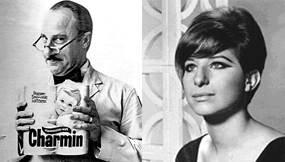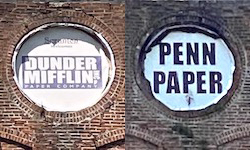“Lighten up,” is the best recommendation to PR people that I have heard in many years of covering the business.
Bryan McCleary, associate director of communications at Procter & Gamble, delivered that message at a politics and branding session held at Finn Partners’ New York office last night.
 McCleary hails from a political background, servicing as press secretary for Ohio’s former Senator John Glenn. He noted that criticism is a way of life in the political arena. P&G is constantly under attacks or targets of boycotts from right- or left-wing groups, noted McCleary. He takes criticism with a “grain of salt.” At the end of the day, McCleary said “people go back to their homes” and a target company survives.
McCleary hails from a political background, servicing as press secretary for Ohio’s former Senator John Glenn. He noted that criticism is a way of life in the political arena. P&G is constantly under attacks or targets of boycotts from right- or left-wing groups, noted McCleary. He takes criticism with a “grain of salt.” At the end of the day, McCleary said “people go back to their homes” and a target company survives.
The Internet trope, “Streisand effect” was bandied about as an example of how an over-reaction or cover-up sometimes makes things worse. The crooner, in 2003, attempted to squash an aerial photo of her Malibu mansion used in a piece about coastal erosion. Irked by what she considered an invasion of privacy, Streisand sued under California’s anti-paparazzi law to suppress the pix. Babs lost and the photo went viral on the Internet running up more than 400K views during the next month. Spoof songs/videos followed to compound Streisand mistake.
Erin Duggan, executive director for NYC DA Cyrus Vance and Weber Shandwick alum, echoed McCleary, saying sometimes a perceived crisis evolves into a second-, third- day story and then disappears. She told the packed room to “pick & choose battles.”
An entertaining Andrew Newman, current contributor to the New York Times and reporter/editor for alternative newspapers across the U.S., marveled about the communications evolution from pitching a product’s functional benefits (e.g., “selling stuff”) to promoting creepy relationships with consumers. He pondered whether people really want a relationship with Oreos?
Hum-drum Duracell, which is now part of P&G (McCleary conceded that we market a lot of boring products), was singled out as a product with solid connections to consumers. It has a whopping 4M fans on Facebook. Firefighters account for a big chunk of that fan club.
What’s the difference between Duracell and arch-rival Energizer’s marketing effort. Newman said Duracell’s advertising line features a fireman shining his flashlight down into a well to discover and then rescue little lost Johnny, while the Energizer’s drum-whacking bunny keeps going and going and going as it has for quite some time. Which battery would you say has a better emotional connection with today’s consumers? It’s no contest.
And remember Mr. Whipple of Charmin toilet paper fame. He was the fanatical somewhat crazed store clerk who told supermarket shoppers to stop squeezing the Charmin products on display. (Ah, the glory days of TV advertising.)
Softness was the selling point. Charmin missed the boat on that one, according to Newman. He said market research showed Charmin that a mere third of consumers considered tissue softness as an important product attribute. Softness, noted Newman is only important for people who spend a lot of time in the bathroom. Strength (for those who are in and out) and price (penny-pinching customers) are equally important. Voila, Charmin is now marketing in three versions. The Times contributor thinks of the variations as “good,” “better” and “best.”
As for Mr. Whipple, he wouldn’t dare try to squeeze the heavy-duty Charmin.


 AB InBev has hired Donna Lorenson as chief communications officer and elevated the PR function to the senior leadership structure in the aftermath of the Bud Light marketing disaster.
AB InBev has hired Donna Lorenson as chief communications officer and elevated the PR function to the senior leadership structure in the aftermath of the Bud Light marketing disaster. Tunheim handled the Minnesota USA World Expo bid committee, which on June 21 congratulated Serbia for landing the 2027 event.
Tunheim handled the Minnesota USA World Expo bid committee, which on June 21 congratulated Serbia for landing the 2027 event. United Minds, management consultancy, has launched Myriant, a business resiliency offering to help clients deal with the challenges during this era of misinformation, polarization and geopolitical upheaval.
United Minds, management consultancy, has launched Myriant, a business resiliency offering to help clients deal with the challenges during this era of misinformation, polarization and geopolitical upheaval.  ImageShield, which guards against online image abuse, is looking for a communications pro to handle its PR and marketing campaigns.
ImageShield, which guards against online image abuse, is looking for a communications pro to handle its PR and marketing campaigns. Who knew that there is a real paper company, Pennsylvania Paper & Supply, inside the iconic building seen at the opening of every episode of “The Office?”
Who knew that there is a real paper company, Pennsylvania Paper & Supply, inside the iconic building seen at the opening of every episode of “The Office?” 


 Have a comment? Send it to
Have a comment? Send it to 
No comments have been submitted for this story yet.